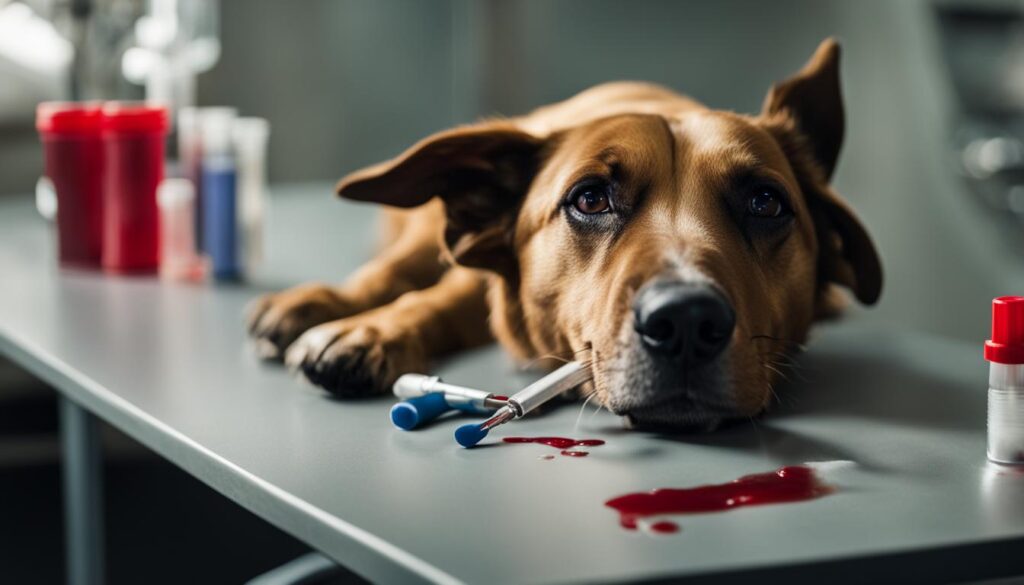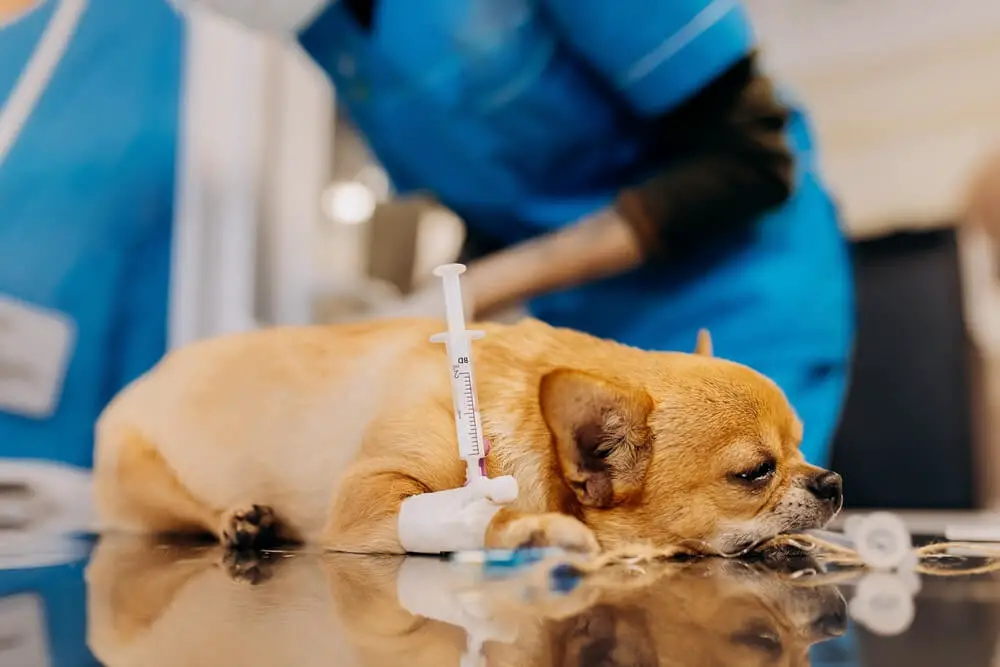Sedating a dog can be a necessary step in providing proper veterinary care and ensuring a smooth experience for both your pet and its caretakers. However, one vital concern for many pet owners lies in understanding the cost of dog sedation. In this article, we will dive into various factors affecting the expense of sedating a dog, providing you with the necessary information to make informed decisions regarding your pet’s needs. From location considerations to different Anaesthesia techniques, we will cover the crucial aspects to consider when facing pet sedation costs and Sedate A Dog For Nail Trimming, veterinary sedation expenses.
Key Takeaways
- Dog sedation costs can vary based on factors such as pet size, location, and the type of veterinary clinic.
- Breed, age, health condition, and personality of the dog can influence the dosage and type of sedation needed, in turn affecting the cost.
- Emergency veterinary care or specialized sedation may result in higher sedation expenses.
- Additional expenses could include pre-sedation consultations, blood tests, imaging fees, and related procedure costs.
- Understanding the difference between sedation and anesthesia can help pet owners make informed choices about their pet’s health care.
- Proper communication with your veterinarian is essential for managing sedation costs and ensuring the safety and well-being of your pet.
The Factors Influencing Dog Sedation Costs
Dog sedation costs can be influenced by various factors, which determine the overall expenses you might have to cover when your pet requires sedation for a medical procedure or treatment. Understanding these factors will help you make informed decisions and adequately prepare for the upcoming veterinary care.
One significant factor affecting the cost of sedating a dog is the size and weight of the pet. Larger dogs generally require higher doses of sedative medication, which means higher expenses compared to smaller dogs.
“Pet size sedation expenses can vary considerably, with smaller dogs requiring less medication and thus, incurring lower costs.”
Emergency veterinary care can be notably more expensive than routine appointments. If your dog requires immediate sedation due to an acute medical issue, the urgency of the situation tends to increase the costs.
Another aspect to consider is who is performing the sedation. Whether it’s your primary veterinarian, a specialist, or an emergency vet, the professional’s experience and expertise can impact the procedure’s cost. Likewise, regional differences in veterinary care costs play a role in determining the overall sedation fees.
When assessing the sedation needs of your dog, veterinarians will also take into account any existing health problems the dog may have, as these can influence the choice of sedation method and the required dose. The type of anesthetic technique desired, whether light sedation or deep sedation, can also lead to differences in overall costs.
Additionally, your dog’s breed and individual sensitivity to sedatives can affect the expenses involved in the procedure. Certain breeds may require adjustments in dosage due to their sedative sensitivity, which in turn influences the costs. Age is another factor, as younger or older dogs might need the dosages adjusted to accommodate their specific needs.
Additional Expenses Beyond Basic Sedation Fees
Besides the base cost of sedation, you may encounter other expenses related to the overall process. One such cost is for the veterinarian consultation before sedation is applied to your pet. Fees for these visits typically range from $50 to $250.
While patient monitoring during heavy sedation is vital, it could potentially add to the overall cost, although sometimes this service is included in the base fee. It is essential to discuss with your veterinarian whether monitoring is an additional cost or part of the final fee.
Read more: Are you Looking to trim your dog’s nails at home

Pre-sedation blood tests play a significant role in assessing your pet’s overall health and determining suitable drugs. The costs for these tests can add an additional $80 to $200 to your final bill. Remember, blood tests are essential for the safety and well-being of your pet during sedation.
Imaging costs can also vary depending on the type of imaging required. X-rays generally cost between $75 and $250, while ultrasounds range from $300 to $600. If more advanced imaging techniques like CT or MRI scans are needed, expect significantly higher costs.
It’s crucial to understand and be prepared for any sedation-related expenses beyond the base fee, as this will enable you to make informed decisions about your pet’s medical care.
Lastly, you should also consider the costs of accompanying procedures, such as minor surgeries, that might be performed during sedation. By being aware of these additional expenses, you can make better decisions for your pet’s well-being and avoid surprises when it comes to veterinary costs.
Sedation vs. Anesthesia: What's the Difference for Your Dog?
When it comes to veterinary care, pet owners may be faced with the decision to sedate or anesthetize their dogs. Understanding the difference between sedation and anesthesia, as well as when they are appropriate, is crucial for making informed choices for your pet’s well-being.
Defining Sedation and Anesthesia
Sedation is a medically induced state of relaxation where pets may remain awake and aware. This can be administered orally or by injection and is often used for non-surgical sedative use, for minor procedures, and to manage stressful vet visits. On the other hand, anesthesia results in controlled unconsciousness where pets cannot sense their surroundings. Anesthetic medications typically involve injectable or inhalable agents, and anesthesia is often necessary for more invasive procedures. Pets under anesthesia require more extensive veterinary monitoring during sedation than those under sedation.
Common Procedures Requiring Sedation
Light sedation might be used for routine veterinary services like nail trimming, dog grooming sedation, X-rays, IV catheter placement, blood draws, and checkups for nervous pets. Oral sedatives may also be prescribed for managing stress during events such as vet visits or grooming appointments. Heavier sedation may be necessary for procedures like wound cleansing, skin tumor removal, or orthopedic X-rays.
Ensuring Safety During Sedation
Modern veterinary practices prioritize pet sedation safety by closely monitoring vital signs, providing supplemental oxygen, and using external heat sources during the procedure. Minimizing sedation risks is essential to ensure the best outcome for sedated pets.
Though complications can arise with sedation or anesthesia, the risk is relatively low, with a 0.14% chance of anesthetic death risks. Dialogue with veterinarians regarding individual risks and post-sedation care is advised to address a pet owner’s concerns.
Ultimately, understanding the difference between sedation and anesthesia helps pet owners make informed decisions about their dog’s care while keeping safety and comfort in mind. It’s essential to work closely with your veterinarian, considering your pet’s unique needs and the specific procedure in question.
Conclusion
As a responsible pet owner, making informed decisions about dog sedation is essential for the well-being of your dog during medical procedures. Cost considerations play a major role in these decisions, with sedation expenses varying widely depending on factors such as size, health condition, sensitivity, and behavior. By having open conversations with your veterinarian about potential costs and exploring feasible alternatives, you can make well-informed choices best suited to your pet’s needs.
Finally, understanding and being prepared for post-sedation dog care contributes significantly to a positive outcome. Knowing how to care for your dog after sedation will help ensure their comfort and swift recovery. By being attentive to your pet’s individual needs and considering all aspects related to dog sedation costs and options, you can confidently provide compassionate care that will promote your furry friend’s long-term health and happiness.
Frequently Asked Questions (FAQs)
How much does it cost to sedate a dog?
The cost to sedate a dog typically ranges between $50 and $200, depending on factors like the size of the dog, location, and type of veterinary clinic. Smaller dogs generally require less medication, resulting in lower costs, while larger dogs may cost more. Additional expenses can also arise, such as office visits, pre-sedation testing, and accompanying procedures.
What factors influence the cost of dog sedation?
Factors that can affect the cost of dog sedation include the size and weight of the dog, the urgency of the procedure, the type of veterinarian performing the sedation, regional veterinary care costs, any existing health problems the dog may have, and the type of anesthetic technique desired (light vs. deep sedation). Breed, age, sensitivity to sedatives, and the pet’s personality can also play a role in determining the cost.
What is the difference between sedation and anesthesia for dogs?
Sedation is a medically induced state of relaxation where pets may remain awake and aware, while anesthesia results in controlled unconsciousness where pets cannot sense their surroundings. Sedation can be administered orally or by injection, but anesthesia typically involves injectable or inhalable agents. Pets under anesthesia require more extensive monitoring than those under sedation.
Are there common procedures requiring sedation?
Light sedation might be used for routine services like nail trimming, grooming, X-rays, IV catheter placement, blood draws, and checkups for nervous pets. Heavier sedation may be necessary for procedures like wound cleansing, skin tumor removal, or orthopedic X-rays. Oral sedatives may also be prescribed for managing stress during events like vet visits or grooming appointments.
How is the safety of sedation ensured for dogs?
Modern veterinary practices ensure the safety of sedation by closely monitoring vital signs, providing supplemental oxygen, and using external heat sources during the procedure. Though complications can arise, the risk is relatively low. It is advisable to talk with a veterinarian about individual risks and post-sedation care to address any concerns.

